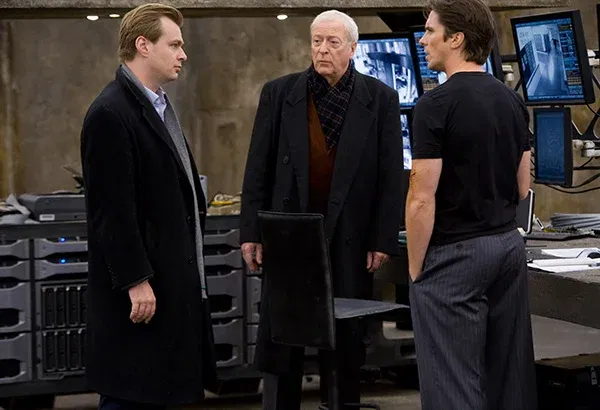
Prepare to embark on a journey through the varied and captivating movie interpretations of one of the most iconic superheroes of all time—Batman. The dark and gritty Gotham and its caped crusader have been envisioned by many directors, with the overall cinematic universe of Batman being redefined and reimagined multiple times.
In this article, though, we’re looking at arguably the most iconic portrayal, “The Dark Knight”, crafted by Christopher Nolan. Let’s look at how his Gotham compares to the other fine directors who have delved into interpreting the world of Batman and his adversaries.
Christopher Nolan’s Batman trilogy, comprising "Batman Begins" (2005), "The Dark Knight" (2008), and "The Dark Knight Rises" (2012), stands as a landmark in superhero cinema. Nolan's trilogy is celebrated for its deep thematic exploration, realistic portrayal, and complex character arcs – all the likes of which were never really seen in Batman’s world, before the trilogy’s manifestation.
So, even though the entire cohesive trilogy is one that’s globally lauded as one of the greatest of all time, to streamline this analysis, let’s focus here on the “The Dark Knight”.
Christopher Nolan's "The Dark Knight" is a masterpiece that transcends the boundaries of the superhero genre, offering a gritty and realistic portrayal of Gotham City. This film stands out for its thematic depth, addressing complex issues such as order versus chaos, morality, and the impact of vigilantism on society.
Tim Burton’s take on Batman introduced a gothic, almost fairy-tale-like aesthetic, and some say that this was the film that set the stage for later iconic Batman renditions. It’s an iconic film in its own right.
Burton’s films are characterised by dark, fantastical elements, with Gotham City depicted as a surreal, nightmarish landscape. Burton’s Batman, played by Michael Keaton, is a brooding figure, while the villains, like Jack Nicholson’s Joker and Danny DeVito’s Penguin, are larger-than-life, grotesque characters.
Joel Schumacher’s films took a starkly different approach, embracing a colourful style. "Batman Forever" and "Batman & Robin" are filled with vibrant costumes, exaggerated set designs, and a lighter tone. While these films were less critically acclaimed, they brought a playful, almost comic book-like quality to the Batman universe.
Zack Snyder’s Batman, portrayed by Ben Affleck, is a darker, more intense version of the character. "Batman v Superman: Dawn of Justice" explores themes of power, responsibility, and vengeance. Snyder’s visual style is marked by dramatic, high-contrast imagery and a sombre tone, reflecting the weight of the character’s burden and the complex moral questions he faces.
Matt Reeves’ "The Batman" presents a grounded, detective-focused approach to the Dark Knight. Starring Robert Pattinson, this version emphasises Batman’s role as the world’s greatest detective, navigating the grimy underbelly of Gotham. Reeves’ film is marked by its gritty realism, exploring the psychological aspects of the characters and the pervasive corruption in Gotham.
Each director portrays Batman’s heroism and sacrifices in unique ways. Nolan’s Batman is a symbol of resilience and moral integrity, while Burton’s version is a tragic hero caught in a gothic nightmare. Schumacher’s Batman is more of a larger-than-life superhero, and Snyder’s interpretation is a tormented vigilante. Reeves’ Batman is a relentless detective, determined to bring justice to a corrupt city.
Villains in Batman’s universe are crucial to the narrative’s depth. Nolan’s Joker is a chaotic force challenging Batman’s ethics, whereas Burton’s villains are grotesque figures adding to the gothic horror. Schumacher’s villains are exaggerated and campy, while Snyder’s antagonists are formidable adversaries reflecting his darker tone. Reeves’ villains are grounded and psychologically complex, fitting his realistic portrayal of Gotham.
The visual styles of each director significantly influence the tone of their films. Nolan’s realistic, practical effects-laden approach contrasts with Burton’s gothic, stylised aesthetic. Schumacher’s vibrant, colourful design stands in stark opposition to Snyder’s dramatic, high-contrast visuals. Reeves’ gritty, grounded style offers a fresh take, emphasising realism and psychological depth.
Christopher Nolan’s trilogy redefined the superhero genre, proving that these films could be profound, complex, and thematically rich. His influence is evident in the more grounded and serious tone adopted by subsequent superhero films.
Nolan’s films not only achieved critical acclaim but also immense box office success, solidifying Batman’s place in popular culture. Burton’s films brought a gothic charm that resonated with audiences, while Schumacher’s lighter, more playful films, though less critically acclaimed, found a unique place in the Batman lore. Snyder’s intense, visually striking films and Reeves’ gritty, realistic take continue to shape the evolving cinematic universe of Batman.
Fundamentally, though, each director’s unique vision has contributed to the rich, diverse tapestry of Batman’s cinematic legacy. And each of these master movie makers has done their part in ensuring that the Dark Knight remains a beloved and enduring figure in film.
Which director is your favourite? Join the conversation.
For more news and articles on your favourite movies, franchises and more, click here.
To see what’s showing in a Ster-Kinekor theatre near you, click here.